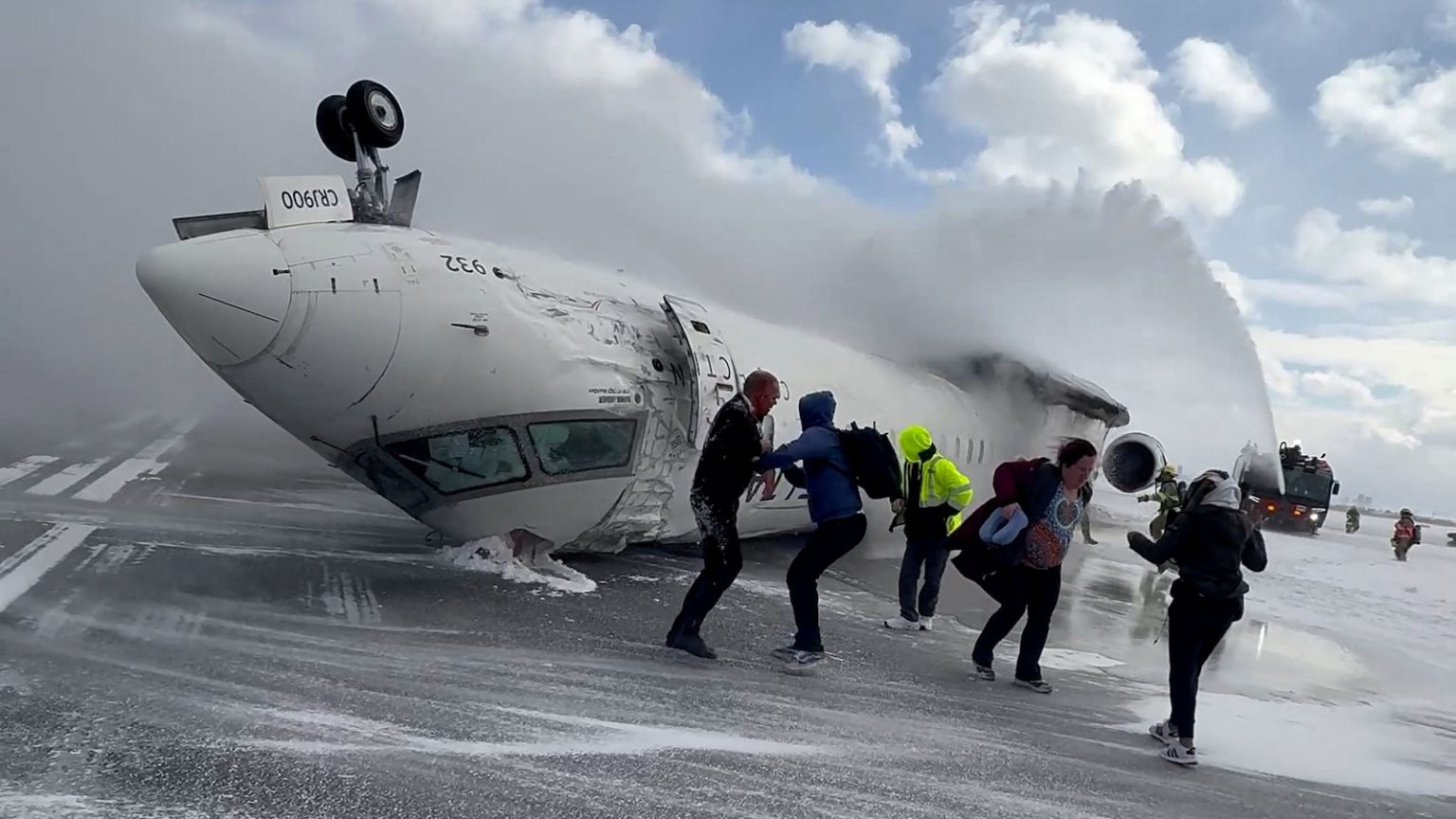The Miracle of Delta Flight 4819: A Tale of Survival and Precision Engineering
Introduction: A harrowing yet hopeful incident
On a fateful Monday, Delta Flight 4819 crash-landed at Toronto Pearson International Airport, leaving the world in awe as all 80 people onboard emerged with only minor injuries. The Bombardier CRJ-900, a trustworthy workhorse for mid-sized city routes, survived the ordeal despite a hard landing that led to the collapse of its right landing gear and the eventual detachment of its wing. This incident underscores a remarkable story of survival, attributed to the aircraft’s design, rigorous safety measures, and the crew’s unwavering composure.
The Crucial Role of Landing Gear: A Grounded Perspective
The CRJ-900’s landing gear, though giving way under the impact, played a pivotal role in the passengers’ survival. According to experts, the right landing gear’s collapse was not a failure but a protective mechanism. By absorbing and distributing the tremendous force of the impact, it prevented the fuselage from bearing the brunt, thereby shielding the cabin from more severe damage. This absorption likely diminished the crash’s ferocity, contributing to the aircraft’s structural integrity.
Wing and Fuselage: A Sacrificial Shielding
As the aircraft skidded down the runway, the starboard wing scraped against the ground before separating from the fuselage. This detachment, though dramatic, served as a sacrificial shield, preserving the cabin’s safety. The wing, housing half the jet’s fuel, snapped off cleanly, preventing potential fires from reaching the cabin. This separation highlights a critical design element where components are engineered to yield under extreme stress, protecting the passenger compartment.
Inside the Cabin: Fear, Heat, and Heroism
Passengers experienced a terrifying sequence of events as the plane flipped, leaving them suspended upside down. The heat from an external fire intensified the ordeal, yet fear gave way to resilience. Modern seatbelts and sturdy seats held firm, securing passengers in place. The sense of community emerged as neighbors helped one another, exemplifying human spirit amidst chaos.
The Crew’s Steadfast Response: Training in Action
The crew’s prompt, professional response was vital. Trained to remain calm and act swiftly, they guided evacuations efficiently. Within minutes, everyone was safely outside, escaping potential dangers like reigniting fuel. This response, driven by extensive training and instincts, turned a potential disaster into a survival story.
Ongoing Investigation: Unraveling the Cause
The Transportation Safety Board of Canada is investigating, focusing on factors like mechanical failure or pilot error. While conclusions may take months, the incident already offers lessons in resilience and preparedness. The interplay of engineering, training, and human courage saved 80 lives, a testament to aviation safety’s evolution.
This incident, while harrowing, stands as a beacon of hope, illustrating how meticulous design and human readiness can transform tragedy into triumph.















